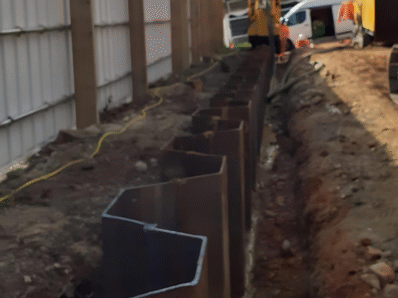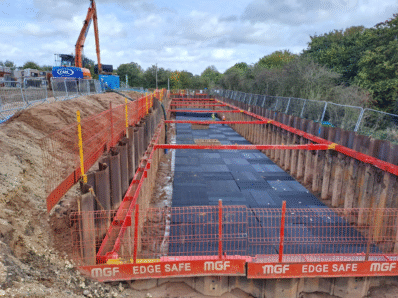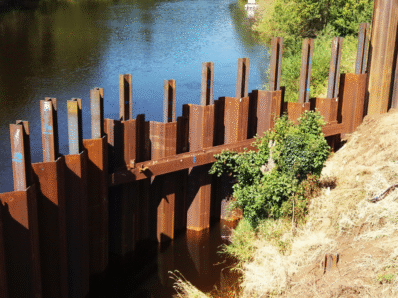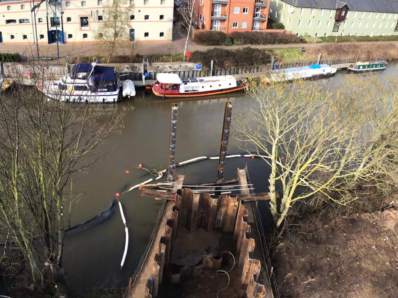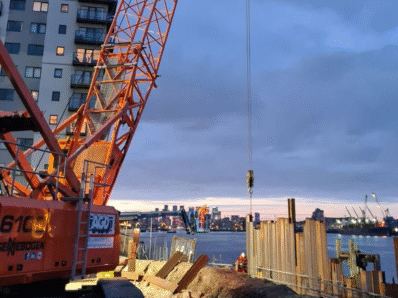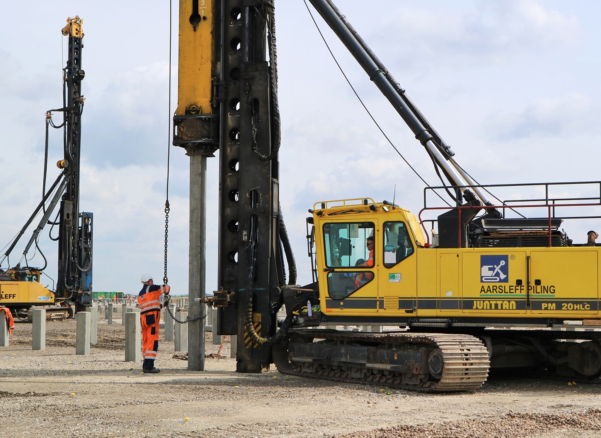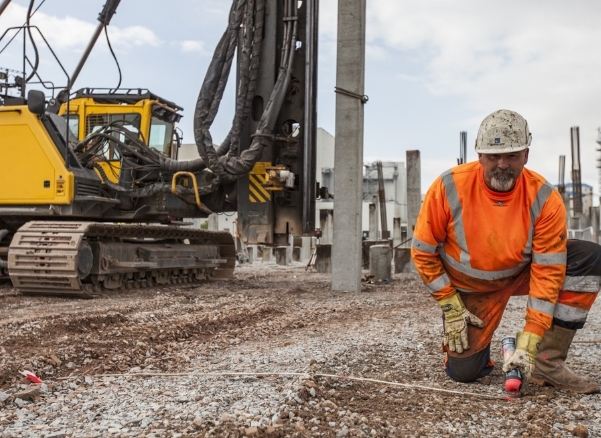What is Temporary Sheet Piling?
Temporary sheet piling is a widely used method of providing structural support and ground retention during the construction process, where steel sheet piles are interlocked into the ground to create a continuous, temporary wall. This wall is designed to retain earth, water or both, making these systems especially valuable in projects involving excavation, earthwork support or cofferdams.
This piling method is commonly used in civil engineering, infrastructure and marine projects, offering a cost-effective, reusable solution. With the right temporary sheet piling design, tailored adjustments can be made to meet a wide variety of ground conditions and project timelines.

Our Temporary Sheet Piling Services
With over 30 years of experience, Aarsleff provides fully integrated temporary sheet piling solutions, from geotechnical design through to installation and extraction. Our engineers deliver temporary retaining walls, cofferdams, and excavation support systems that are safe, sustainable, and compliant with BS5975 and ISO 9001 standards. Every solution is tailored to site conditions and project requirements, helping contractors achieve efficient, low-impact ground support for works such as sewerage treatment plants, bridge abutments, tunnels, and underground tanks.
Temporary vs Permanent Sheet Piling
In most cases, sheet piling is used as a temporary solution, often employed to provide short-term stability in basement construction projects and pipeline installations. However, there are also situations where sheet piling may be installed as a long-term or even permanent structure.
The decision to use sheet piling as a temporary or permanent solution ultimately depends on the specific requirements of the project and the long-term goals of the structure.
If your project is located on or near water, you may require a cofferdam structure to allow for safe and dry working areas below the water table. Permanent sheet-piled solutions, on the other hand, may be used in flood defences, harbours, access jetties or retaining walls.
Ease of Installation and Extraction
One of the key advantages of using temporary works is its ease of installation and removal. Sheet piles can be quickly installed and driven into the ground, providing immediate support and containment for the construction site. They are installed with minimal vibration and noise using specialist piling equipment like vibratory hammers or pile pressing equipment. The flexibility in lengths and section sizes allows sheet piles to be closely tailored to each project.
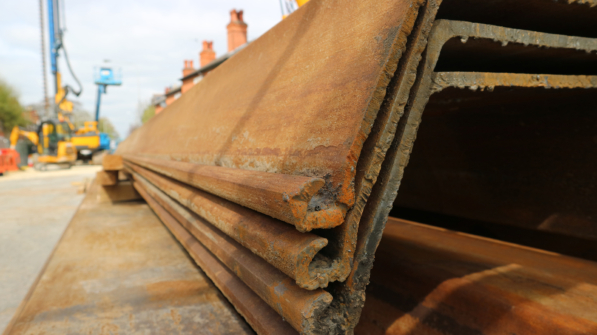
How Are Temporary Sheet Piles Installed?
Temporary sheet piles can be installed using several techniques, selected based on ground conditions, site access, and environmental sensitivity:
- Vibratory driving – Fast and efficient for granular or loose soils, suitable for open sites.
- Impact driving – Used where dense or cohesive soils require higher driving energy to reach design depth.
- Hydraulic pressing – A vibration-free, low-noise method ideal for urban or sensitive environments near existing infrastructure.
How Are Temporary Sheet Piles Removed?
Once the project is completed, the extraction of sheet piles from the ground can be done using a vibratory extractor or other specialised equipment, leaving behind minimal disturbance to the surrounding environment. These temporary steel products can be used again and again in future construction projects.
Temporary sheet piling is typically removed using the following process:
- Inspection – Sheet piles are inspected for stability, ensuring they are safe to remove. Checks include assessing whether damage or wear could compromise the stability or extraction process.
- Exposure – Once deemed safe for removal, soil around the temporary sheet pile wall is excavated to expose pile sections using excavators or backhoes.
- Disconnection – With the piling exposed, the interlocking sections that hold it in place are detached. Specialised tools or equipment may be used to disconnect the sections and then remove them from the ground.
- Extraction – The piles are removed vertically using rigs or other specialist equipment, with close attention paid to nearby structures and utilities, as steel sheet piles can be installed near permanent infrastructure. Any soil or debris that was displaced should be carefully backfilled and compacted, leaving the area in a safe, stable condition.
- Site Restoration – Once piles have been removed and the area is restored, final inspections are conducted to ensure that safety protocols have been followed and the site is ready for the following phase of construction or development.
The process is carried out according to comprehensive temporary works procedures, ensuring safety and compliance on all temporary construction sites.
Typical Applications
Temporary sheet piling is widely used across civil engineering and infrastructure projects, including:
- Excavation and basement support for deep foundations and underground structures
- Temporary cofferdams for marine, riverside, or floodplain construction
- Ground stabilisation for utilities, pipelines, and culverts
- Short-term earth retention for bridge abutments, shafts, and tunnels
- Flood defence and diversion works in water-prone or low-lying areas
- Highway, rail, and embankment stabilisation where temporary support is required

Examples of Sheet Piling Projects
Since our establishment, Aarsleff has delivered numerous sheet piling projects across the UK. Our extensive portfolio highlights our technical expertise and versatility across a range of environments and structures. Click on a project to explore full details. Recent completed temporary works include:
Contact Our Sheet Piling Experts
Aarsleff has over 30 years of experience in the design and installation of temporary sheet piling. Our geotechnical design experts deliver complete temporary earthwork support solutions, from the design stage to installation and extraction. Our solutions are planned and executed to ensure they have the least possible impact on the environment, and with sheet piles able to be reused, they are a more sustainable choice – reducing material waste and the carbon footprint of the work.
We offer a complete service for temporary retaining walls, cofferdams and other sheet piled solutions. Our team can provide bespoke, cost-effective, and regulation-compliant projects to meet your requirements – with temporary solutions often required in sewerage treatment works, bridge abutments, tunnelling schemes, underground tanks and much more. Contact us today to speak with one of our experts or to receive a quote.

